Now for a long time Vokey's have been the #1 wedge on tour, so when Titleist launched the SM7 wedge I wanted to see what had changed and met up with Vokey's right hand man on tour Aaron Dill to find out more.
Hi Aaron. So SM6 was all about moving the CG to go in the right position but you've taken that a little bit further with SM7.
Can you explain what you've done to achieve that?
Yes, we spent the last two years studying SM6. We knew we had a home run from the start, but we learned that we can make some things better and some of that is around the aesthetics, the profiles, the three finishes, the CG placement, we can actually make that better, and of course our score line performance, so all those things really come hand in hand as well as a new grind we have called the D, so we're really focusing on the entire package when we're creating a line like this.
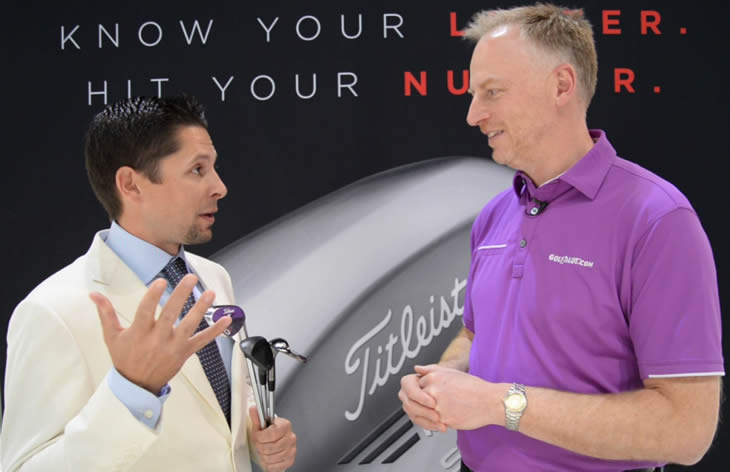
One of the things I noticed between the SM6 and SM7 as I have been are able to try them both, is that the hosels are a little bit shorter on the 7s and can you explain why you would do that?
Yes, so when we're designing CG we need to make sure that we have discretionary weight to put around the club. Sometimes especially on our stronger lofted wedges, 46 through 52, we need to make sure that well we have enough weight to move around so we can get that CG low enough and that does sometimes change the hosel length but we do have our centre hosel lengths on these just see our pads are increasing so a little more mass down below on 46 or 52 a little higher on our sand wedges and even higher CG on our 58 through 62.
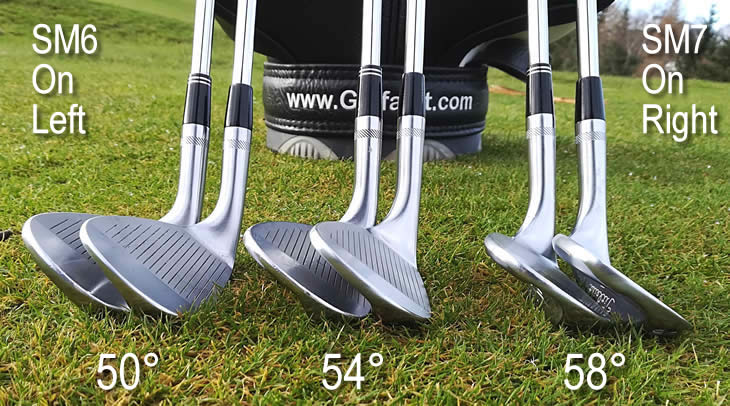
With those pads and that's shaping it's almost gone the other way now hasn't it? Instead of being curved one way it's now curved the other. Is there a reason for that?
I say it's a smiley face because it makes me happy to see we've come this far. On our old stuff you know it was sloped this way now we're the other way and that's just part of our design process and how we put mass in the right location.
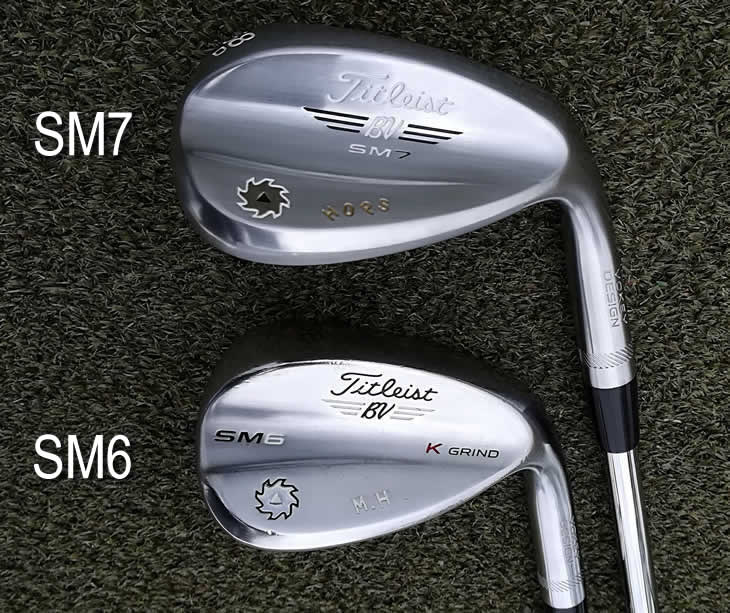
So is it adding more mass by having a different shape of muscle if you like?
That's part of it but it's really more about adding mass to the right place.
One thing I thought was with some of the grinds and are they may be slightly less bounce than it was before, so maybe people who were in an F could be an S this time around? Is that how you would see it or not?
They can be but we like to test and make sure that that product or that grind works best for them. A lot of times when we're working with guys we say, don't be so fixated on the numbers. The numbers are not always what works best for you. Let's figure out what letter you are. What grind you are and that really is the better story.
I'm an M grind man you're a K grind man, you know, and that's only going to be figured out through testing, so when we work with Tour players, that's what we'll do, we'll blind test, I'll grab the head, I'll hand it to the players say 'no peeking', just hit a shot and let's talk about the results at the end.
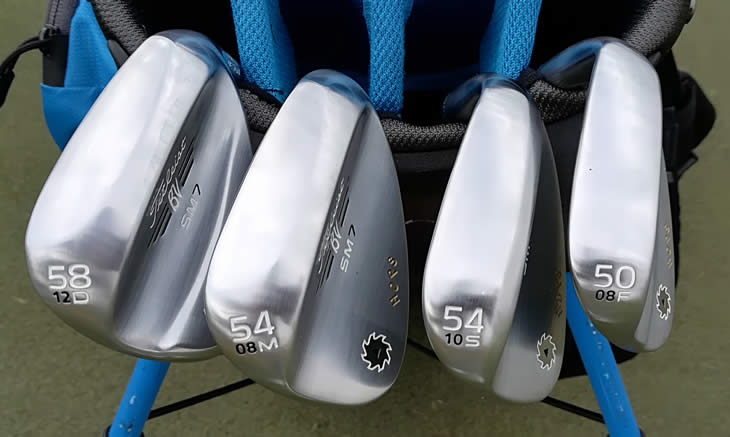
So how would you suggest an amateur would go about picking the right letter?
If I was fitting an am, I would tell them, OK let's first establish what your bookends are. Your pitching wedge is 46°, what's the highest loft you feel comfortable playing let's say it's 58°. We know what we're gonna be on the high and low ends so how do we fill the middle?
How many wedges can we fill based on what you have on the rest of the bag. So a player says I can be a four wedge guy. Perfect, let's look at the gaps. Pitching wedge goes this far the next wedge it fits you is a 50°, it's 4° so 54° and then your 58°.
So once we've established how far things are supposed to be, we can start working on the grinds. So typically what we see on tours, we see players gravitating on your 46 or 50 or 52. It's slightly more bounce because they're down so they're descending but they're also trying to produce a little bit lower flight.
That's helping us manage our carry, keep our spin high so we have stopping power and as we start to increase the loft that's when we start to see the short game really come to form and that's where you start to know, OK this player hits this shot very well, hits this shot poorly. When we address we always look at the misses we always say, hey, what's your what's your strength? What's your weakness? Let's address the weakness, let's make that better.
And then you have to have a game plan. Once we've kind of worked on those grinds now. We say okay we have what's the wedge for? Is the 60 your short game club all around? Great. Let's make that strong, let's give it this much bounce and then
the sand wedge again what's it going to be? It's a 10 iron or it's just a long club. Great. Let's make that work the
best for you. So have a purpose, have a plan before you go in and make your decisions.
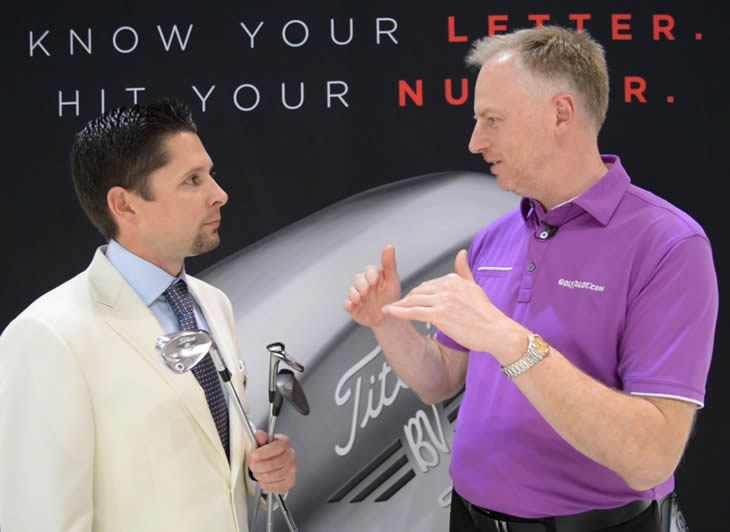
Certainly when I've experienced these sessions you really have to do it on grass and see how it reacts to your swing through the turf really because it's sometimes really quite apparent which grind is best for you really isn't it?
Absolutely. You'll never know until you do it. But I do like to tell guys, hey train your eye and train your ear to see a little lower flight and hear a deeper more solid thud. Those are indicators of a great wedge and that's part of your technique, that's part of the ground you're hitting on. Those two things will give you a good sense of what is right
The only new grind you've got coming in is the D. Can you explain why and maybe how you come up with the decision that you need another grind?
Absolutely. So as we're going through the US on the PGA Tour the West Coast Swing is usually our firmest of events so we can go with a little bit less bounce but as we make our way east into the Mid-West and into our Florida Swing, that's where the soil changes a little bit it's got more sand and it gives out a little bit faster and that's what we start to see players coming to me and saying, hey, we need so I need a little more bounce my ball fight's high, it's carrying short, I'm not spinning it very much, I feel uncomfortable and that's where players who use an M grind on a normal basis might say, hey, a little bit more bounce would suit me and that's where that D is perfect because it's really the high bounce version of the M.
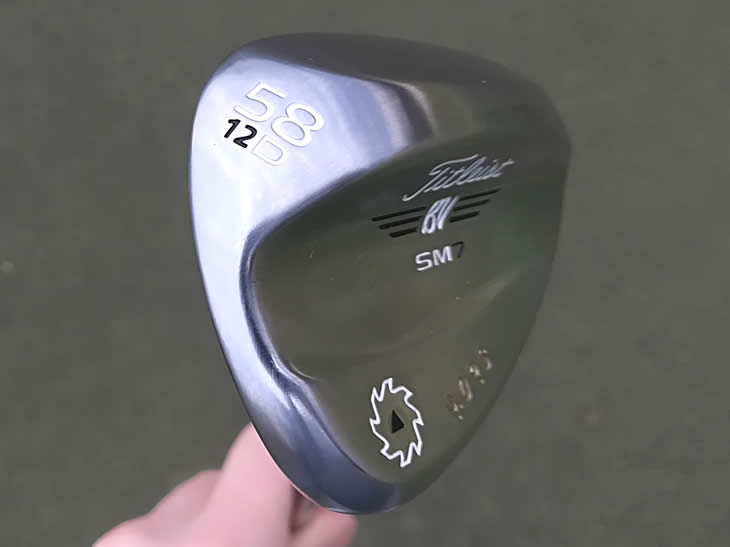
So the M is the one with a lot of camber in the heel and toe, so you would just increase the bounce in the middle so it gets a bit more playability if you are playing it straight, is that right?
Correct. So we're gonna increase bounce to the front.So this angle it's a little steeper, but we don't sacrifice the performance and playability in the trailing edge so it allows players to have that lower, more consistent flight but also have the ability to open up that wedge and have some versatility around the greens.
OK you've got slightly different finishes there. How did you decide which finish to come out with?
A little bit of market research, a little bit of tour player research. We've got our gorgeous classic chrome which a lot of people love. We've got the steel gray which is kind of a charcoal finish with a bit of brush to it, and then we've got this really cool new finish called Jet Black and the cool thing about it's a very modern look.

It's all black. Black paint. Our tour players have really adopted it nicely. We've got guys like Jimmy Walker has just put it in the bag. Cam Smith's put it in the bag and I'm sure over time that's going to funnel down into more and more guys.
Does the finish maintain its look as long with the darker finishes as the chrome?
It does. Now these two are chrome finishes, so these will maintain their look for the majority of the time. Now this is closer to the raw finish, so it's not actually chrome, it's a dip. A QPQ process and where you'll see wear is going to be on the soul or where you make interaction with the ground and on the face where the ball will be hitting.
Well, I think they look pretty good so thanks for talking to us and good luck this year.
My pleasure, thank you.
Titleist SM7 Wedge Review
More from Titleist